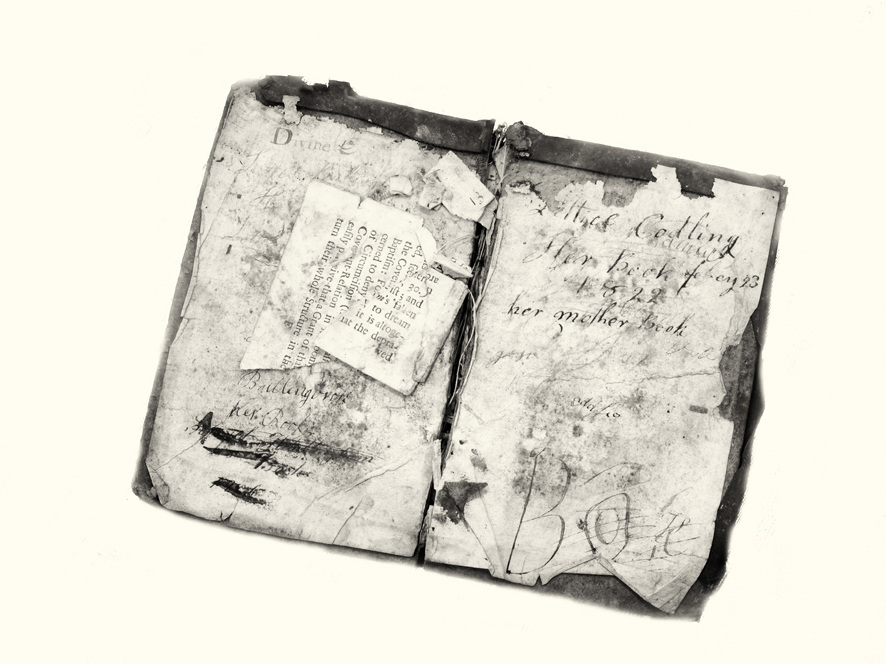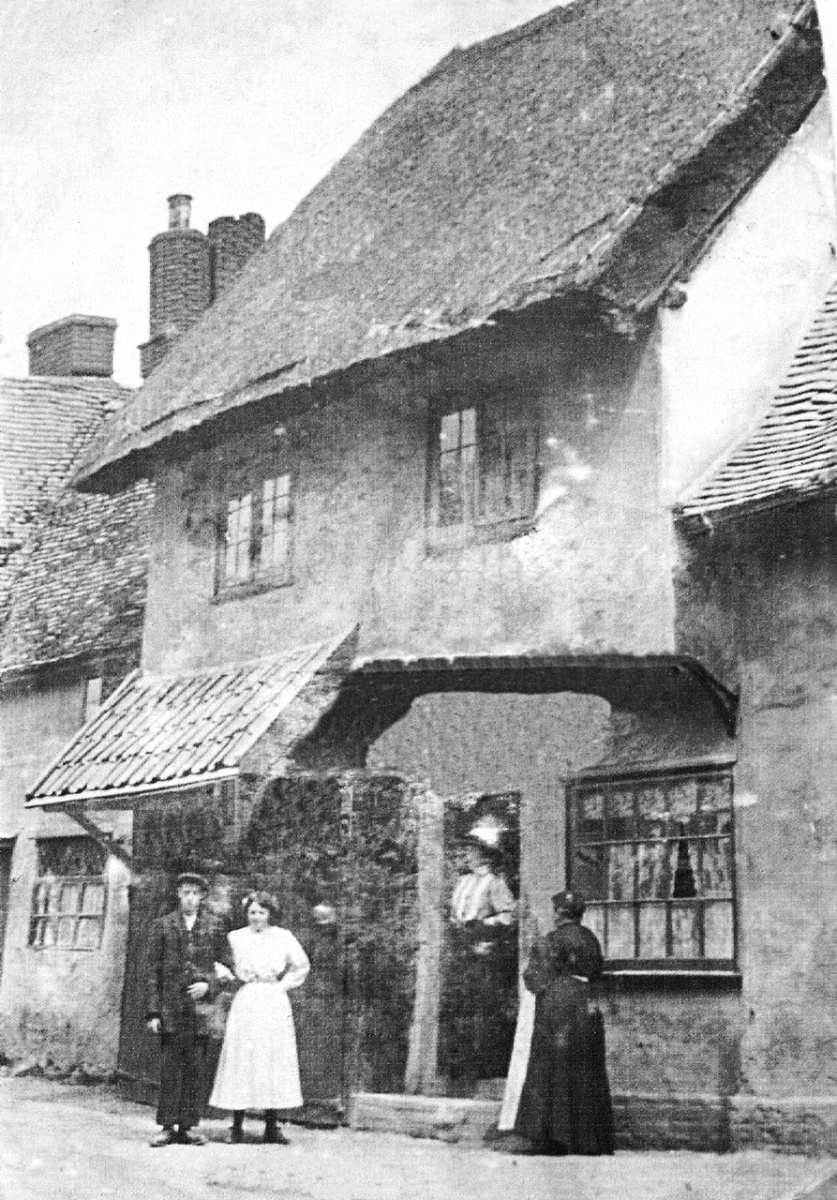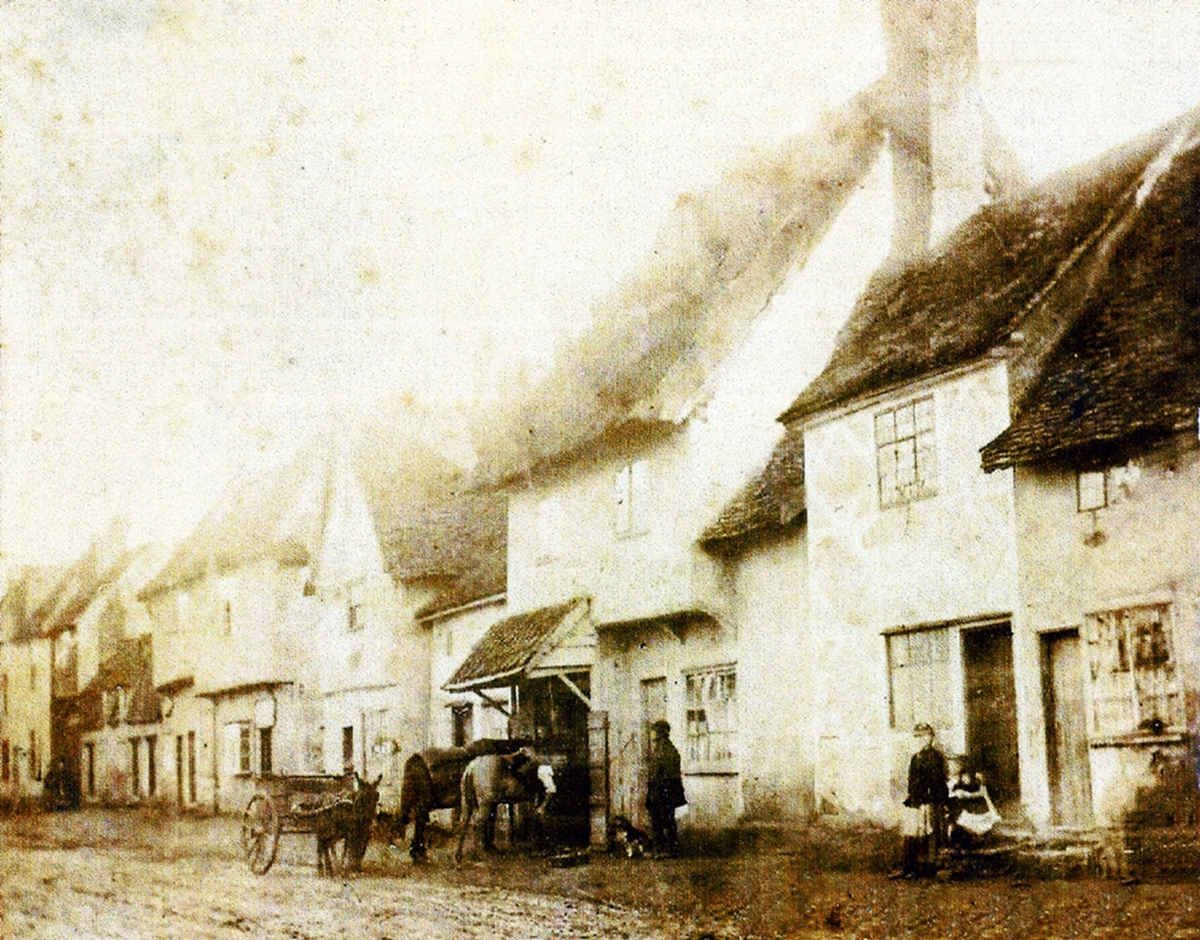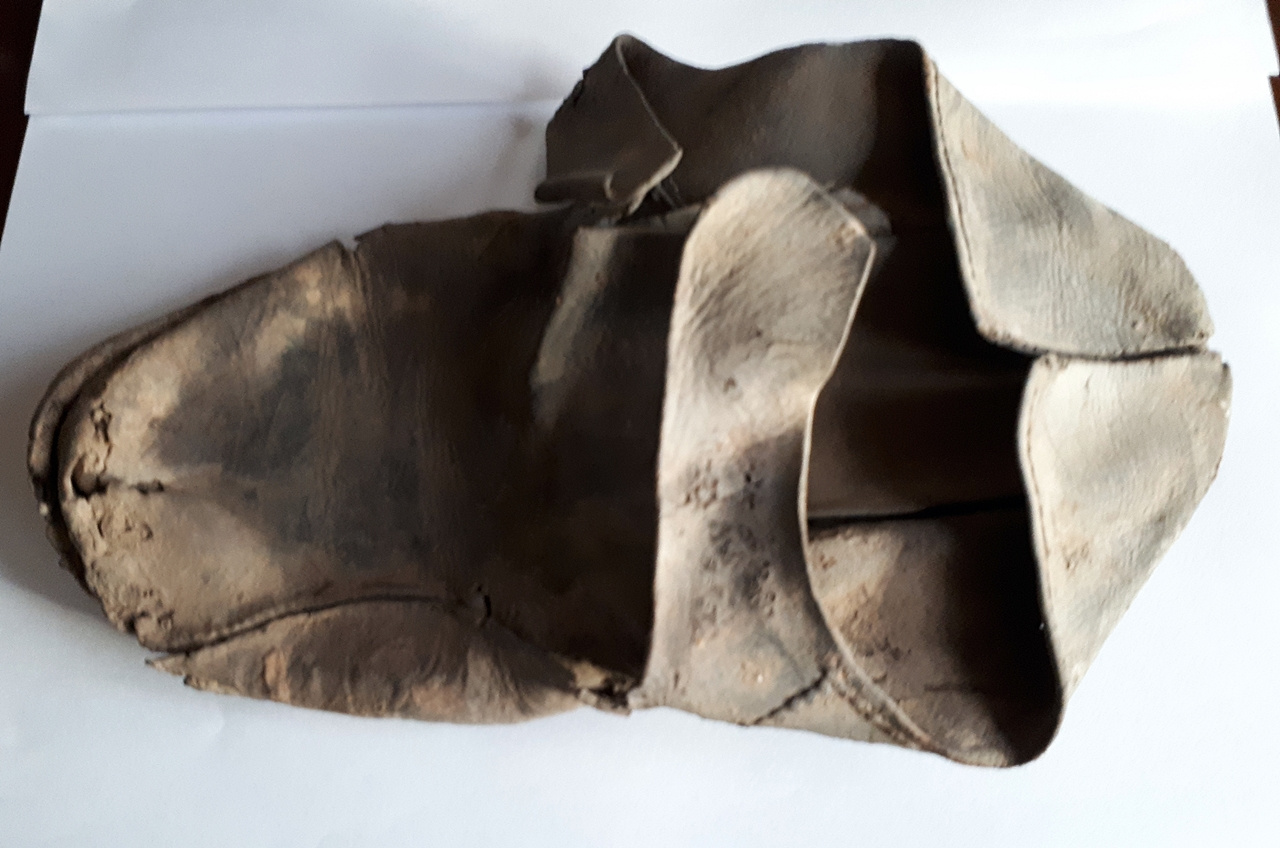In August of 2018 Moyse’s Hall Museum assisted in the identification of not one, but a series of finds all from the same location; a void by an Inglenook in a property known as Codling’s Forge in Long Melford. This ultimately opens up the debate as to whether the deposed discoveries are accidental consignments to their location, or whether alternatively this discovery was an example of a Spiritual Midden; an aspect of Spiritual Archaeology, alongside ritual deposition. To this matter more attention later.
Fragments of a Psalm Book
Firstly to give context to the finds in the order with which they were discovered/presented. The first found was a badly misshapen (beyond restoration) hat with the intriguing inclusion of fragments of a Psalm book. These appeared to have been employed as some sort of lining as they were beneath the stitching in some parts. Two types of stitching were discernible. Firstly that of the professional Milliner, the second, less adroit, and probably historic repair work made by the owner. Ultimately this hat was identified by a professional historic milliner as being in the style of a Capotain Hat, a form of head wear popular in the 17th and early 18th century often associated with “Puritan” fashion. This particular specimen could date to 1660-80. Other finds that came in with the hat did not necessarily elaborate on its deposition. These were not necessarily of the same period, but conceivably possible to be so. One appeared to be a pocket corner; the interior part of half a pocket. The other was possibly what seemed to be a pin cushion.
Matthew Hopkins: Witch-finder General
It was tempting to try to draw a link between Long Melford’s known association to a history of 17th Century Witch-Hunting. A style of hat made famous by a contemporary image of Witch-finder General Matthew Hopkins wearing it. And the concept of “Ritual Deposition”; the deliberate placing of ephemera in a property’s crevice’s for the purpose of some form of spiritual protection. The fact that there was the inclusion of a religious element in the Psalms further prompted this notion.
Codling Family of Long Melford
The further find of the leather outer bindings of a book gave the helpful hand written inscription of its onetime owner, Lettice Codling and a date of February 23rd 1822. It also mentions that the book belonged to her Mother (of the same name). Local Councillor John Nunn liaising with the Museum had done some of his own research and was helpful in providing the Baptismal records of Lettice Codling. Born to Roger Codling and Lettice Codling Née Bulingbroke. Roger is recorded as Marrying in 1772, but then single by the time of his Daughter’s Baptism in 1774. Therefore one could assume the Mother was dead at this point. Further references to the Codling family at this period Include “Roger Codling Blacksmith” in the Universal British Directory of Trade, Commerce and Manufacture…by Peter Barfoot and John Wilkes C. 1796. A further reference to a Lettice Codling being listed as one of those present at a birth was found, but sadly lost again. In short, however, there is nothing to prove in any certain way that the Codling family were known for their superstitious practices/behaviour, however nor is there evidence to refute that they were not.
Apotropaic (Evil Averting) deposit
Further finds of a shoe and scraps of leather and what would appear to be a badly deteriorated Shawl were also made. The Shoe has been dated by Rebecca Shawcross of Northampton Museum as being a Buckle Latchet Shoe, dating to around 1720-1750. Architect and architectural historian Timothy Easton coined the phrase “Spiritual Midden” to differentiate between the deliberate placing of small objects behind walls and under floors, etc. that is “Ritual Deposition” and the larger groups of deposits found very often by the sides of inglenook fireplaces. Much work has been done by both Eastman and Ralph Merrifield before him to attribute an explanation for both Ritual Deposition and Spiritual Middens. These can only ever be assumptions however, as no contemporary account of the practice was ever recorded.
It has been suggested that the location of a fireplace may well have been due to it serving as a potential access point for evil. It was also the most dangerous part of the house and therefore possibly needed some form of Apotropaic (Evil Averting) deposit. The access point to the Spiritual Midden being an upper storey left open, enabling the practice to be continued through successive generations. This would account for the broad range of 17th Century ephemera found at Codling’s Forge. The items found concur with other examples in that they are often “Worn out” and therefore perhaps at the end of their use to their owner. They are also personal at one time retaining characteristics of the owner. For example a shoe may have borne its owner’s smell at one time. The range of artefacts may denote a family depositing to protect itself as a unit. It would appear from looking at other examples this could well be a Spiritual Midden as opposed to an accidentally created time capsule. We sadly still do not know what exactly was thought to have been achieved with each article deposited, or why the specific articles were chosen, but in Codling’s forge we have the rare example of being able to name the individuals who created it, Roger and Lettice Codling.
© Moyse’s Hall Museum












